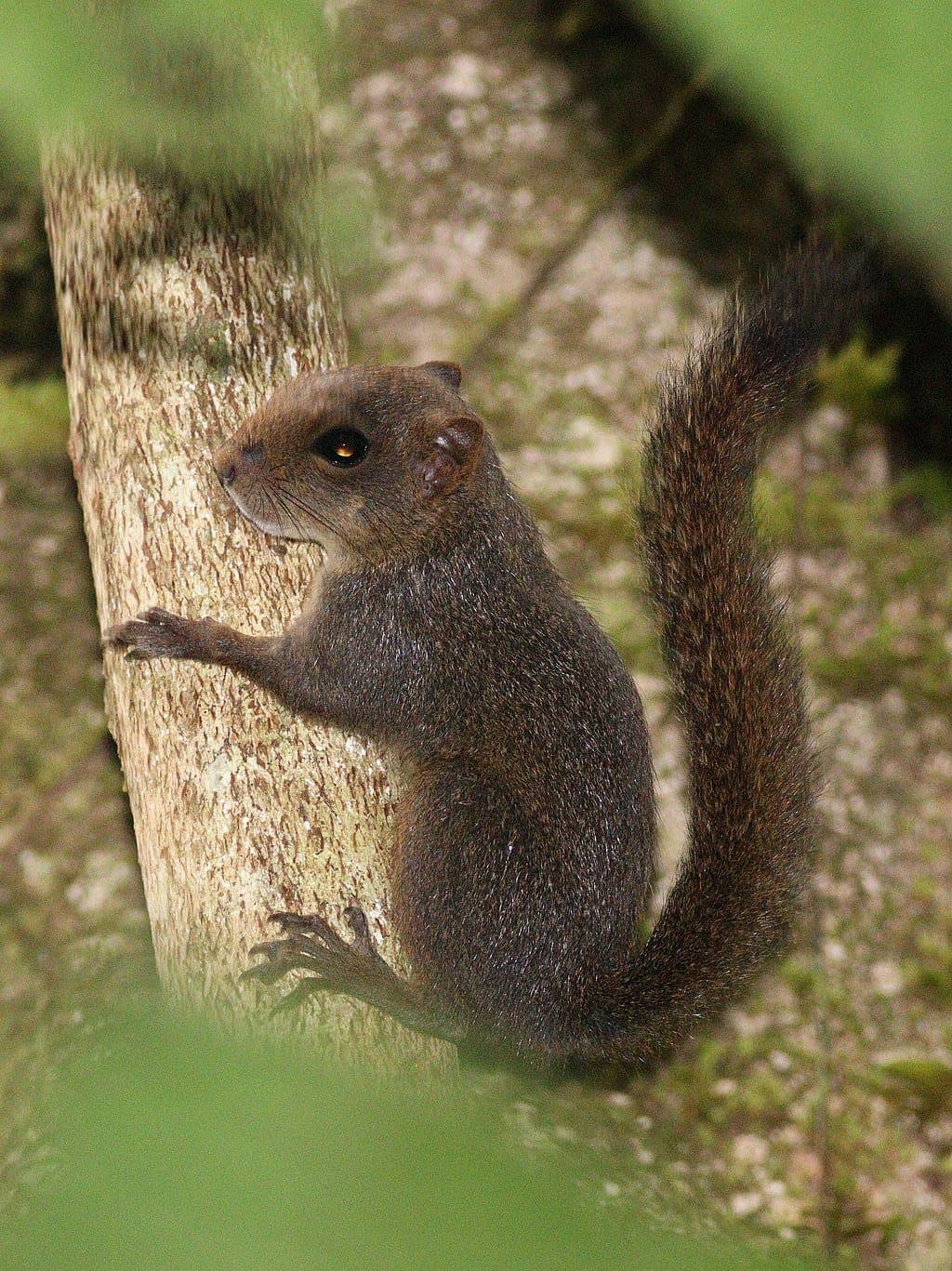It’s teeny tiny. It’s hyperactive. It’s Alfaro’s pygmy squirrel.
I have been crashing through Costa Rica’s underbrush attaching cameras to trees for several years now. In the beginning, I frequently hooted with joy as I laid my eyes upon a new species that I had never recorded before. As time passed and experience was gained, the feeling of my heart skipping a beat and my brain whispering ‘Huh! That’s something new!’ has grown more and more infrequent, especially with mammals.
As you may have guessed, just a few days ago I was able to feel that feeling again because I recorded my very first videos of Alfaro’s pygmy squirrel.
Rodents, including squirrels, can be hard to distinguish when recorded with camera traps but I knew exactly what I was looking at when this little squirrel appeared on the tiny LCD screen on my camera. That’s because months earlier, when I first came to this farm in Osa to place the camera traps, I had a discussion with the owner about the wildlife that he had seen in the area. At one point, he mentioned a little brown and gray flying squirrel that he had seen darting among the treetops.
I immediately thought, ‘There are no flying squirrels in Costa Rica!’, but there’s no use in saying that to a nice man that you just met, so I just nodded my head and said, “That’s interesting”. Upon returning to my house, I started looking up all of the information that I could find about a squirrel that fit his description of the flying squirrel, and I landed on Alfaro’s pygmy squirrel.
Alfaro’s pygmy squirrel (Microsciurus alfari) is known as the ardilla enana, or locally, as the ardilla voladora (He was right! Good thing I didn’t contradict him…) in Spanish. The name Alfaro comes from a famous Tico naturalist named Anastasio Alfaro who was the first director of Costa Rica’s National Museum and ran the joint from 1887 to 1930.
As far as a physical description goes, imagine a tiny squirrel and you’ve pretty much got it pegged. They’re brown and gray, with little ears, big eyes, and a less-puffy-than-normal squirrel tail. They have proportionately longer limbs than most squirrels which allows them to increase their leverage and grip while moving vertically on tree trunks and make impressively long leaps between trees.
They live in relatively undisturbed humid forests from the middle of the country over to the Caribbean coast and down to Osa. The literature says they’re most commonly found in mid to high elevation forests, but I recorded mine on a log crossing a stream at sea level several hundred yards from the ocean.
Since they haven’t been studied in any depth, not much about their natural history is known to science. They’re mostly diurnal. They sometimes travel in pairs or small groups. Their diet includes fruits, nuts, bark, tree sap, and insects. That seems to be about the extent of the information that we have about how they spend their little squirrel lives.
I went from having zero Alfaro’s pygmy squirrel videos to having 40 after just one camera revision. Almost all of the videos are exactly the same. They feature a single squirrel moving very quickly, as if the speed of the video has been increased, along a horizontal log and then taking a flying leap out of the range of the camera. I took a few of my favorite clips and made the video below. Enjoy!
About the Author
Vincent Losasso, founder of Guanacaste Wildlife Monitoring, is a biologist who works with camera traps throughout Costa Rica. Learn more about his projects on facebook or instagram. You can also email him at: vincent@guanacastewildlifemonitoring.com






